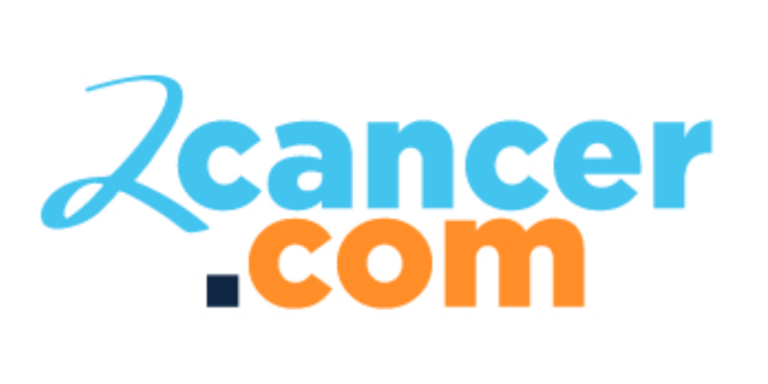While many celebrate Pride Month this June and the advances within the LGBTQ community, the discussion of gay men and cancer remains somewhat taboo. However, if you are gay or bisexual, there is no better time to educate yourself on the dangers of the disease.
Surveys show that gay men often cite three barriers to getting the health care and cancer screening tests:
- Fear of discrimination
- Low rates of health insurance
- Negative experiences with health care providers
A 2017 Gallup poll showed that 11 million Americans – 4.5% of the U.S. population – identify as lesbian, gay, bisexual, transgender, or queer. The percentage was 3.5% in 2012 when Gallup began tracking LGBTQ populations-based data.
However, there is limited cancer screening data for LGBTQ populations. The CDC, SEER, and American Cancer Society do not collect sexual orientation or gender identification data regarding cancer.
Research shows that LGBTQ populations have the highest rates of tobacco and alcohol use, both known contributors to elevated cancer risk. These risks lead to a disproportionate number of LGBTQ individuals living with cancers, including:
- Anal
- Breast
- Cervical
- Colorectal
- Endometrial
- Lung
- Prostate
- Skin
- Testicular
Black lesbian, bisexual, and queer women reported negative screening experiences in which they perceived discrimination from their providers. Moreover, lack of knowledge about LGBTQ-specific cancer screening guidelines in LGBTQ populations and providers contributed to insufficient screening activity.
In addition, researchers lack knowledge about human papillomavirus’s (HPV) ability to be transmitted through anal sex or female-to-female contact. There also is scant information about HPV’s link to the development of squamous cell carcinoma in gay men and lesbians.
HPV, which is spread through receptive anal intercourse, is estimated to be present in 65% of gay men without HIV and 95% of those who are HIV positive. HIV-positive men who have sex with men are 40 times more likely to be diagnosed with anal cancer. According to one model, for a 40-year-old HIV-positive male who has sex with males, treatment and vaccination can decrease the chances of developing or dying from anal cancer by 80 percent.
Healthy People 2030 outlines health goals in the U.S. Among the areas of concern regarding healthcare disparities impacting MSM and other sexual minorities is that gay men across a broad age spectrum are more likely to attempt suicide, experience homelessness, and have high tobacco, alcohol, and other drug use rates. In addition, older MSM may face additional barriers to healthcare because of isolation and shortage of supportive services due to homophobia and stigma.
How you can take action
Starting at age 50, gay men should talk to their healthcare provider about prostate cancer screening. Gender identity should not keep you from having this conversation. Transgender male-to-female patients also should speak with their provider about being screened for prostate cancer.
If you smoke, stop. If you don’t smoke, don’t start. Also, reduce your exposure to secondhand smoke. The American Cancer Society recommends screening for certain people at higher risk for lung cancer. For example, if you are 55 to 74 years, smoke or used to smoke, and are in reasonably good health, you might benefit from screening for lung cancer with a yearly low-dose CT scan. Talk to a health care provider about your risk of lung cancer and the possible benefits, limits, and harms of getting tested for early lung cancer.
Risk factors for colorectal cancer include being older and having a personal history of colorectal polyps or a family history of colorectal cancer. (This type of cancer is often referred to as colon cancer or rectal cancer.) Being overweight, eating a diet high in red and processed meats, heavy alcohol use, smoking, and being inactive also increase risk. Studies also show having type 2 diabetes, irritable bowel syndrome, or specific hereditary syndromes can also increase a person’s risk for colorectal cancer. First, talk to your health care team about your risk factors. Then, even if you have no symptoms, get screened. The ACS recommends starting regular screening at age 45.
To help prevent skin cancer, limit your time in the sun (especially between 10 a.m.-4 p.m.); wear a hat with a wide brim, long-sleeve shirts, and sunglasses when outside; use a broad-spectrum sunscreen with an SPF of at least 30; avoid tanning beds and sunlamps; talk with your doctor about any changes to your skin.
There is no widely recommended screening test for anal cancer. However, some experts recommend screening with a digital rectal exam (DRE) and an anal Pap test for gay men who might be at high risk for anal cancer. HPV vaccination is recommended through age 26 for MSM and people with weakened immune systems (including HIV infection). If you’re between the ages of 27-45, talk to your doctor to determine if HPV vaccination might benefit you.
Likewise, there are no recommended screening tests for testicular cancer. Still, the ACS recommends men be aware of changes in their bodies. For example, most testicular cancers start with swelling or a lump on a testicle that’s often painless. Or, one testicle may appear larger than the other. Men may also notice heaviness or achiness in the lower belly or scrotum.
Caregivers and cancer
Beyond the cancer patient, LGBTQ caregivers are likely to suffer from several chronic illnesses themselves, making them more vulnerable to the stress of caregiving. In addition, these caregivers are more likely to be of lower socioeconomic status, younger, more racially and ethnically diverse, and less likely to be married than their cisgender and heterosexual counterparts. Also, LGBTQ caregivers are less likely to use available resources to manage their stress. They are more likely to report poor physical and mental health than their heterosexual counterparts.
The building blocks for keeping cancer at bay are essential healthy habits:
- Do not use tobacco.
- Maintain a healthy weight.
- Implement daily physical activities.
- Eat healthy – plenty of fruits, vegetables, and whole grains.
- Avoid red/processed meats, sugary drinks, and highly processed foods.
- No more than two drinks per day for men.
- Protect your skin from the sun.
- Know yourself, your family history, and your risks.
- Get regular check-ups and cancer screening tests.
Make the lifestyle changes that can truly make a difference in Pride Month. Be an example of healthy choices for the next generation of the LGBTQ community. Pride is not a choice but being a healthy member of the community is. If love wins – indeed, love yourself first.

